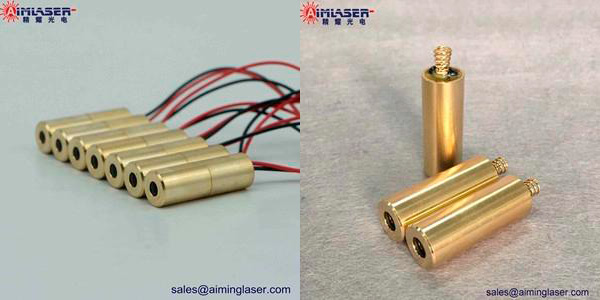Laser modulation is the process of using laser as carrier wave for modulation. Laser has excellent temporal coherence and spatial coherence. It is similar to radio wave, easy to modulate, and the frequency of light wave is very high, and the capacity of transmitting information is very large. In addition, the laser beam has small divergence angle and highly concentrated light energy, which can be transmitted over a long distance and easy to keep secret. Laser modulation can be divided into internal modulation and external modulation. Specific laser beam modulation methods include electro-optic modulation, acousto-optic modulation, magneto-optical modulation, direct modulation, etc.

Firstly, according to the relative relationship between modulator and laser, laser modulation can be divided into internal modulation and external modulation. Internal modulation means that the loaded modulation signal is carried out in the process of laser oscillation, and the oscillation parameters are changed according to the law of the modulation signal, so as to change the laser output characteristics and achieve the purpose of modulation. External modulation refers to loading the modulation signal after the laser is formed, that is, the modulator is placed outside the laser cavity, and the modulation signal voltage is added to the modulator to make some physical characteristics of the modulator change phase. When the laser passes through it, it is modulated. Therefore, the external modulation is not to change the laser parameters, but to change the parameters (intensity, frequency, etc.) of the output laser. External modulation is one of the most important modulation methods. Secondly, according to the working mechanism, they mainly include electro-optic modulation, acousto-optic modulation, magneto-optic modulation and direct modulation (also known as power modulation). Thirdly, it can be divided into amplitude modulation, frequency modulation, phase modulation and intensity modulation.
Using laser as a tool to transmit information, we must first solve how to load the information signal into the laser radiation, that is, laser modulation. For example, the voice information transmitted by the laser is loaded into the laser, the laser "carries" the information to the photoelectric receiver through a certain transmission channel (atmosphere, optical fiber, etc.), and the receiver extracts the loaded voice information to complete the purpose of the call. Among them, laser is called carrier wave, so the information transmitted is called modulation signal. The electric field intensity of the laser light wave is, where AC is the amplitude, is the longitudinal phase angle, WC is the angular frequency, is the phase angle. Because the laser has parameters such as amplitude, frequency, phase and intensity, if one of its parameters changes according to the law of the modulated signal, the laser will be modulated by the signal to achieve the purpose of "carrying" information.
First, the monochromaticity is good. The wavelength distribution range of the light emitted by the laser is narrow, so the color is very pure. The monochromaticity of laser is much stronger than that of other monochromatic light sources. Good monochromaticity can facilitate filtering and improve signal-to-noise ratio. In material processing, the absorption spectra of different materials are different, and the monochromaticity of the laser can well control the absorption depth and distribution. Materials can be processed selectively and controlled. Monochromatic light is much more convenient in optical design. There is no dispersion difference, and the better the monochromaticity, the more stable the corresponding wavelength or frequency.
Second, it has good temporal and spatial coherence. Laser is very different from ordinary light. Because its frequency is very simple, the light emitted from the laser can propagate in the same direction step by step. They can be converged to a point with a lens to highly concentrate the energy and send it to the optical fiber, which is called high coherence. The volume of semiconductor laser used in optical fiber communication is very small, which is similar to that of ordinary crystal triode. Its optical power is generally not too large, usually only a few milliwatts. If its energy is highly concentrated, it can be easily coupled into the optical fiber. This is of great significance to increase the relay distance of optical fiber communication and improve the communication quality. The directivity of laser is much better than that of all other light sources. It is almost a beam of parallel lines. Ordinary light sources always radiate in all directions, which is necessary as lighting. But to concentrate this light at one point, most of the energy will be wasted and the efficiency is very low. Most of the light emitted by the semiconductor laser is very concentrated, and it is easy to enter the end face of the fiber.